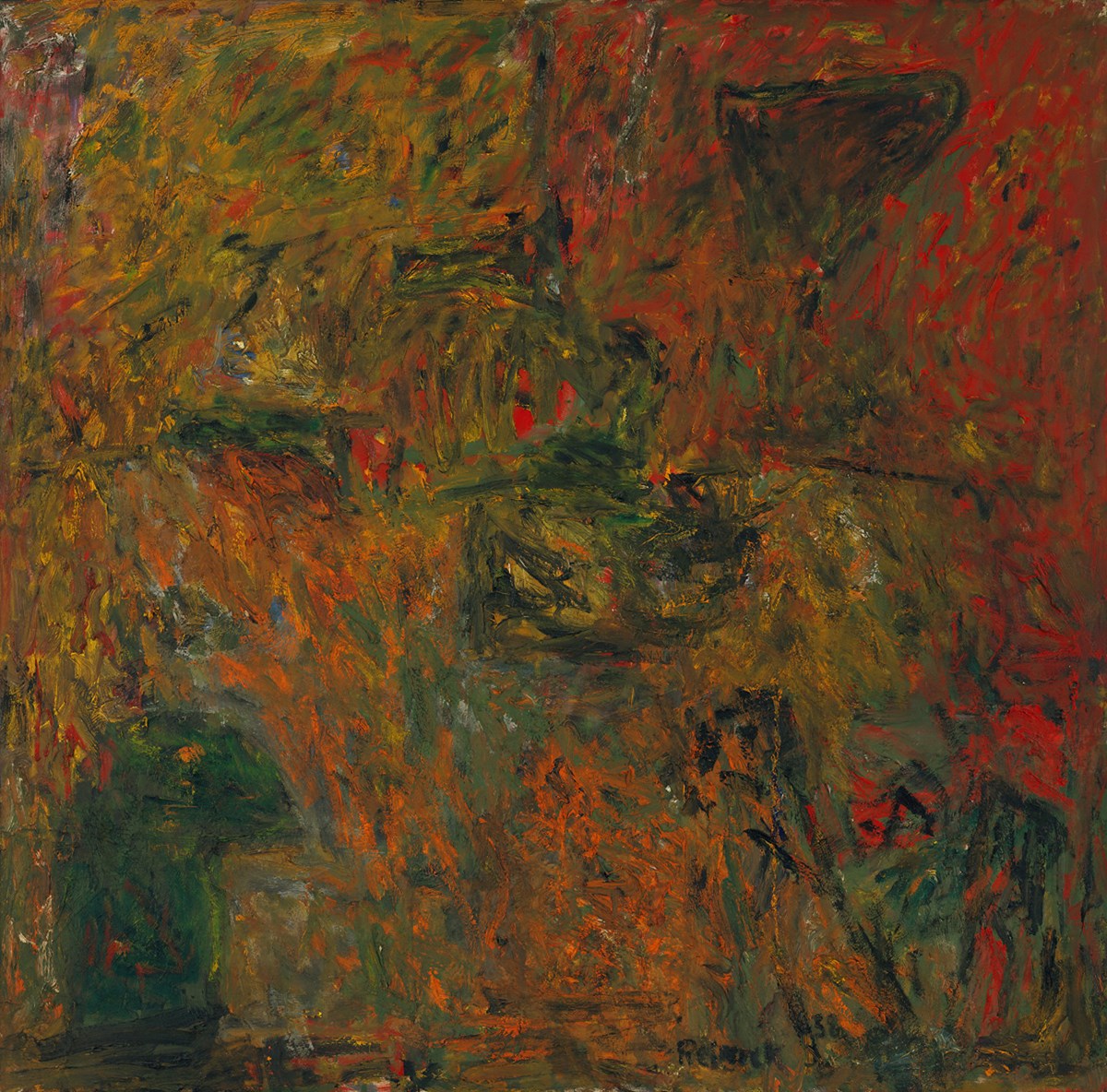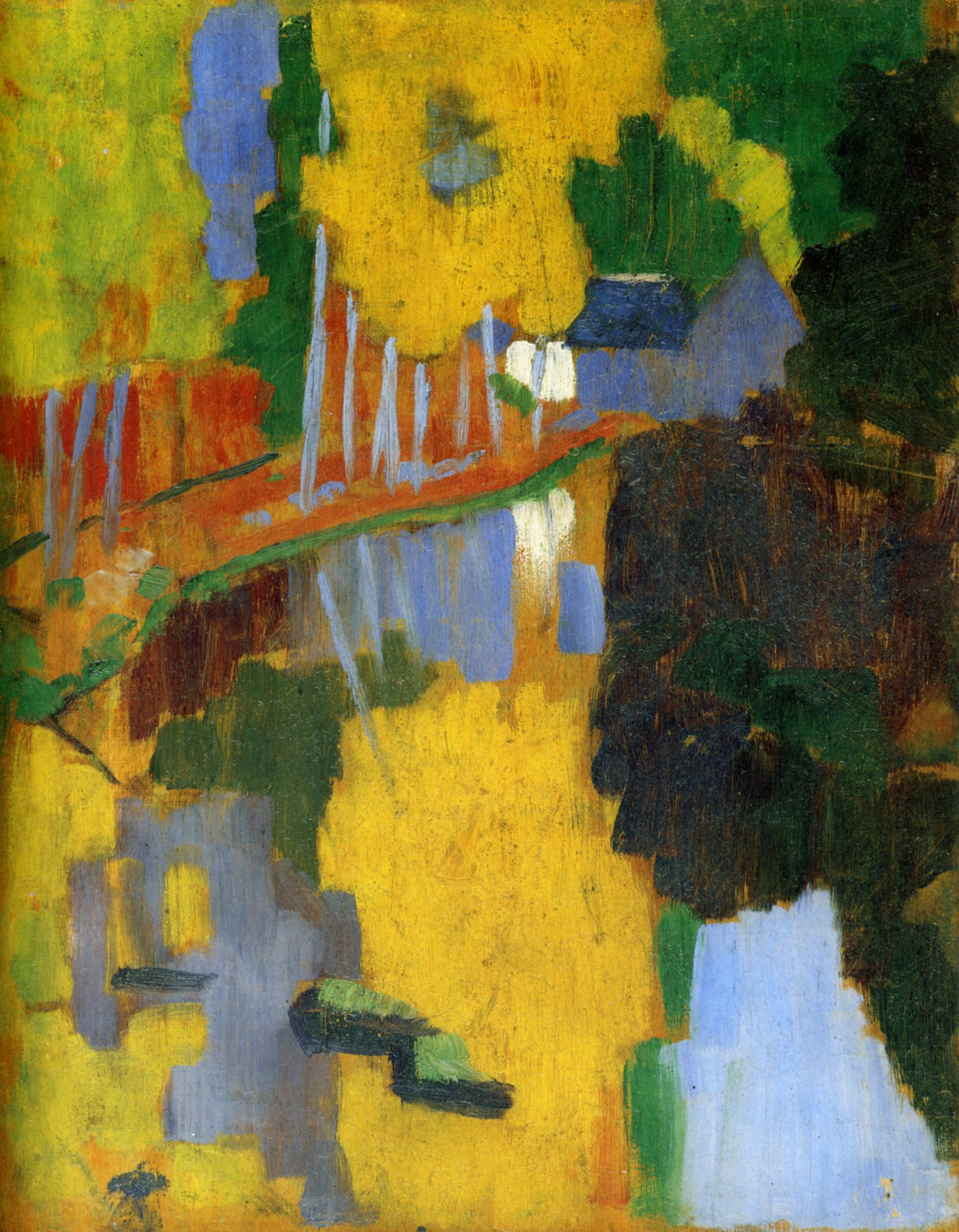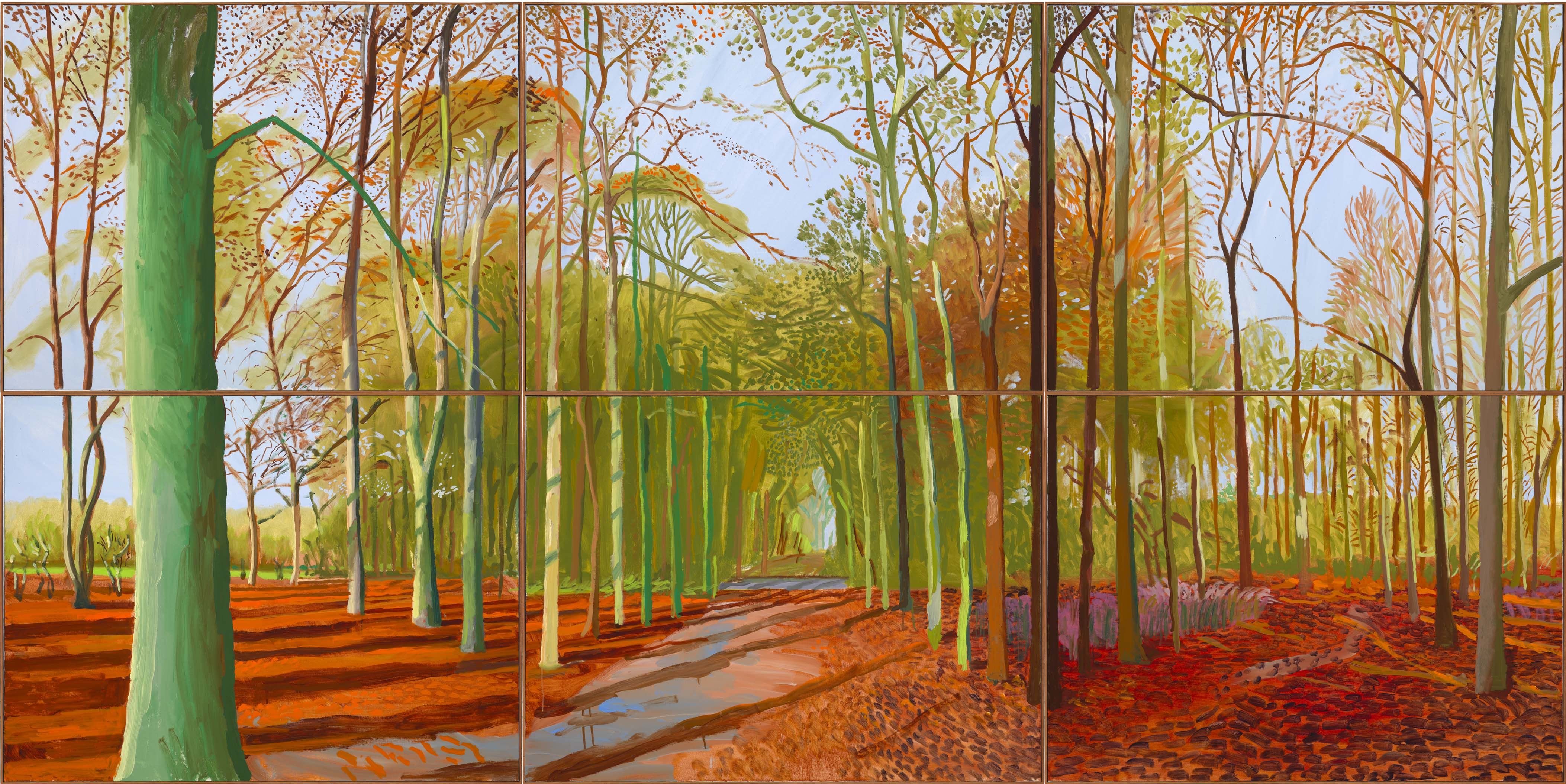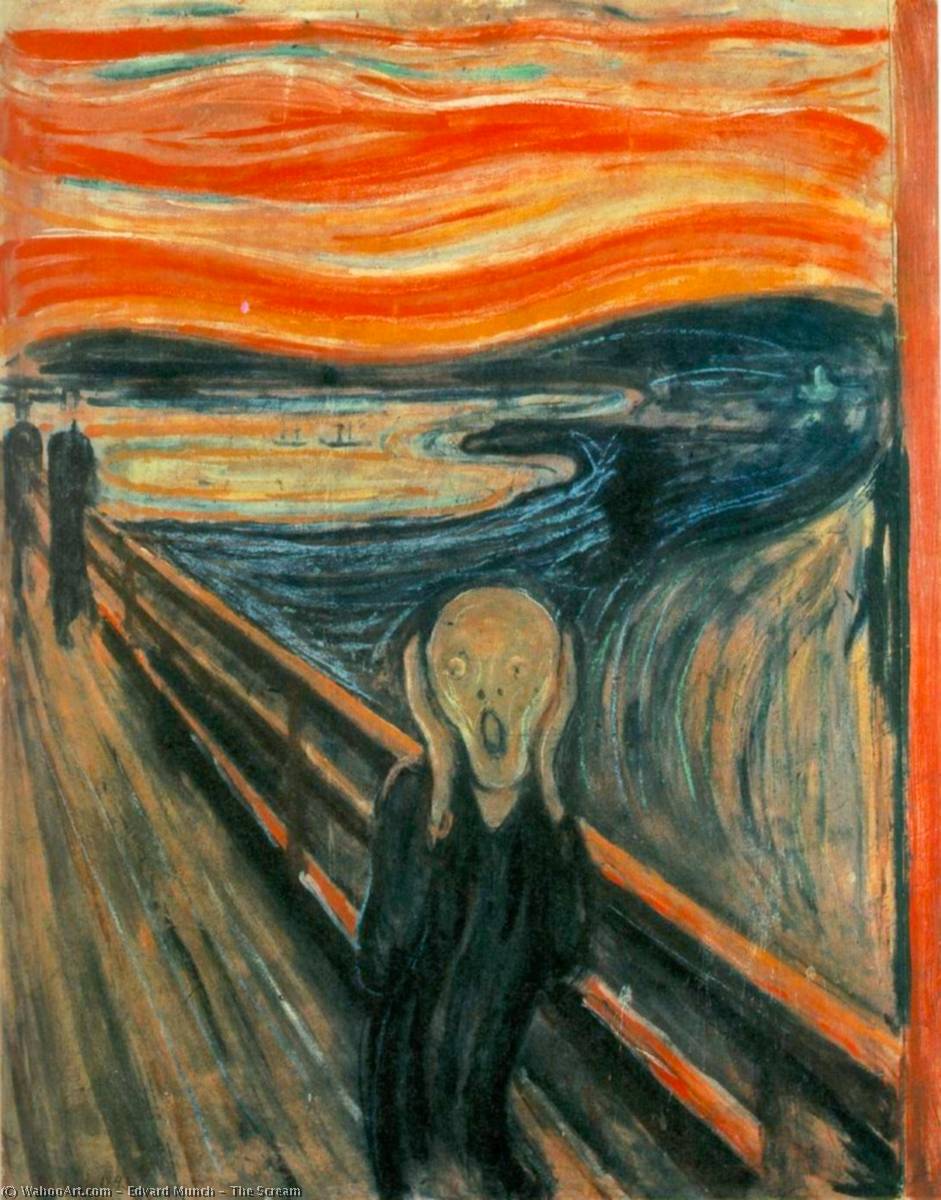“Painting is located in the space of not knowing”
(Wong in interview for Neoteric Art, August 2014)
Phillips is proud and honoured to present a work by Matthew Wong for the first time in a Hong Kong auction, and only a second ever in auction history. Before his untimely death late last year, Wong was being heralded by many in the art world as the leading voice of his generation; a natural successor to the likes of Milton Resnik and Martin Kippenberger, with close friend Jonas Wood going as far to declare “he was the modern day Van Gogh” (Wood quoted by Nate Freeman, in ‘The Art World Remembers Matthew Wong’, for Artnet News, October 2019).

Milton Resnick
Y + R
1958
Oil on canvas
Born in Toronto, Wong flitted back and forth between Canada and Hong Kong for much of his childhood, his parents being successful businessmen in the textile industry, before attending University of Michigan to major in cultural anthropology. He then moved back to Hong Kong, bouncing between several desk jobs with what the artist called “no real sense of purpose or commitment in life” (Wong in interview for Neoteric Art, August 2014). A simple click of a Nokia E87 - a crude still life of his grandfather’s bedroom diverted his destiny from mundane bureaucracy to the very heights of the art world; an act that he labelled as “the first thing I remember doing out of my own creative volition” (Wong in interview for Neoteric Art, August 2014). Inspired, he enrolled at City University HK in 2010, eventually receiving a master’s degree in photography. Though being highly intellectual with an obvious insatiable creative appetite, Wong quickly grew disillusioned with the confines of the practice and began to experiment with drawing, stating that “at first I just bought a cheap sketch pad along with a bottle of ink and made a mess every day …pouring ink onto pages – smashing them together – hoping that something interesting was going to come out of it” (Wong in interview for Neoteric Art, August 2014). Here in painting Wong finally found personal success, despite its reputation as a notoriously difficult medium. Unburdened by the oft derivative nature of institutional courses and teachings, he began to develop an astonishing visual lexicon, borne from these early, chaotic forays into the discipline.
It is this fascinating, unconventional odyssey to becoming an artist that perhaps lies at the heart of our captivation for Wong’s compositions. A child of the modern age, he took to Facebook to further his education, engaging in lengthy debates with figures like gallery owner John Cheim and artist Paul Behnke. Of this lust for knowledge the artist said “I am a bit of an omnivore for sights, sounds and ideas and am always on the lookout for perspectives” (Wong, quoted by Maria Vogel in ‘Matthew Wong Reflects on the Melancholy of Life’, for Art of Choice, November 2018). A prolific painter, Wong produced compositions that are deeply virtuosic but never ostentatious. He creates preternatural landscapes of forests, glens and groves, built of a vibrant Fauvist palette. Executed in 2017, Warmth is a striking example of this vision. Built from an impulsive yet methodological crosshatchings of robust, lozenge-shaped marks, a kind of psychedelic pointillism, Wong creates a scene of polychrome arcadia whose surface teems with life – a visceral vibrancy that makes the paint seem to bounce off the canvas, engendering the space around us, the viewer.
Such rich detail removes a singular focal point, though lends the busy composition a ritualistic quality suffused by an intoxicating ambiguity. Though one could feel overwhelmed by the painting’s granulated atmosphere and contrasting textures and colours, it in fact elicits a meditative tranquility, one of serenity and contemplation. Compounding this sentiment is the small figure placed in the bottom corner, sat on a red bench. Isolated from, yet enveloped by his surroundings, his forlorn gaze cuts through the painting’s dimensionalities – acting as staffage against the composition’s abyssal depth. These qualities are what drew some to label Wong as a ‘nouveau Nabi’, placed into the same praxis as Post-Impressionist painters like Édouard Vuillard and Paul Sérusier for his combination of stylized forms and a luminous palette with mystical suppositions.
“I do believe that there is an inherent loneliness or melancholy in much of contemporary life, and on a broader level I feel my work speaks to this quality in addition to being a reflection of my thoughts, fascinations and impulses”
(Wong, quoted by Maria Vogel in ‘Matthew Wong Reflects on the Melancholy of Life’, for Art of Choice, November 2018).
Testament to Wong’s virtuosity, these Edenic tableaus are products of the endless tumbles of the artist’s subconscious; a subconscious that he draws his own original subject matter, eschewing preliminary drawings or photographs – instead taking inspiration from daydreams, movies and long walks. In a 2013 interview with Studio Critical, Wong explains this process: “I’m just going with my gut…but often times my gut also cancels itself out and I keep painting over an image with a totally different image, and work like this can go on for months before a single surface is resolved” (Wong, quoted in interview with Studio Critical, November 2013). Despite the fact that the scenes are imaginary, it is because of his genius that they are instantly relatable, containing what he called “something in them people across the spectrum can find things they identify with” (Wong, quoted by Maria Vogel in ‘Matthew Wong Reflects on the Melancholy of Life’, for Art of Choice, November 2018), while also being distinctly reminiscent of the artistic intuition shown in David Hockney’s recent landscapes of his native Yorkshire.

Paul Sérusier
The Talisman, the Aven River at the Bois d'Amour, October 1888
Oil on wood
Collection of Musee D’Orsay, Paris

David Hockney
Woldgate Woods, 21, 23 and 29 November 2006, 2006
Wong’s breakout moment occurred in 2016 when esteemed curator Matthew Higgs placed several of his works in his ‘Outsider’ exhibition with Karma. Two years later the artist was putting on his own solo exhibition at the New York gallery, which catapulted him to the upper stratosphere of the art world, the works commanding huge prices which saw some of the most distinguished collectors fight to secure alongside interest from figures representing the likes of MOMA, the Guggenheim, and the Whitney. In Brendan Dugan, the owner of Karma Gallery’s words, “The reaction to his work and exhibition is something that we hadn’t experienced before with a young artist or a first show…It was quite astounding. And the reaction was the same from critics, colleagues and collectors” (Dugan quoted by Neil Genzlinger in ‘Matthew Wong, Painter on Cusp of Fame, Dies at 35’, for New York Times, October 2019). The show even drew praise from New York Magazine critic Jerry Saltz as “one of the most impressive solo New York debuts I’ve seen in a while” (Saltz in ‘Losing Myself in the Paintings of Facebook-Educated Matthew Wong’, for New York Magazine, April 2018).
Sadly his mercurial talent and meteoric rise in the art world was not without internal turmoil. As with so many artists before him, Wong struggled with depression for most of his life, a conflict that his mother has spoken of candidly: “He would just tell me, ‘you know, Mom, my mind, I’m fighting with the Devil every single day, every waking moment of my life”. (Monita Wong quoted by Neil Genzlinger in ‘Matthew Wong, Painter on Cusp of Fame, Dies at 35’, for New York Times, October 2019). Alienated from the outside world, Wong found respite in painting, combining a mastery of skill and vision with melancholic yearnings for solace. His paintings regularly contain referential aspects to his emotional tumult. In Warmth, the background’s expanses of orange and yellow tonalities evoke images of Munch’s famous Scream which employs a similar palette. Indeed the Norwegian Expressionist’s narrative behind his magnum opus bears a somber relation with Wong’s own pervading battle with depression: “I was walking along the road with two friends – the sun was setting – suddenly the sky turned blood red – I paused, feeling exhausted, and leaned on the fence – there was blood and tongues of fire above the blue-black fjord and the city – my friends walked on, and I stood there trembling with anxiety – and I sensed an infinite scream passing through nature”.

Edvard Munch
The Scream, 1893
Collection of the National Gallery and Munch Museum, Oslo, Norway
As such, situated in the crevices of emotional paroxysms and idiosyncrasies of Wong’s paintings lie the reflections of one’s ‘self’ as well as one’s sense of place, what Matthew Higgs called his ‘psychotopograpahies’ (Higgs quoted by Nate Freeman, in ‘The Art World Remembers Matthew Wong’, for Artnet News, October 2019). Imbued within this abundant nostalgia is the artist’s own mode for meditation, an intuitive interaction between pigment and surface that allowed for an escapism from his own troubles. Much can be said of the work of Van Gogh, who himself claimed “I want to reach the point where people say of my work, ‘That man feels deeply, that man feels subtly’”. However his work should not, and is not defined by such struggles. It is instead defined by his supreme refashioning of the landscape genre, creating consequential art that does what all great contemporary art does: prostrating to the past while carving a path to the future.
In Paris’ Pere Lachaise Cemetery, the tombstone of the great early twentieth century painter Amedeo Modigliani reads “Struck down by death in the moment of glory”. On Wong’s, a simple line from one of his poems is inscribed: “I am that which is idle on a summer day. I am the mouth that does not move”. We may forever ask what would have become of this great artist, what masterpieces awaited our devotion further on in his career, but what is certain is that in Warmth, as in all his works, is that he will live on – immortalised for eternity in its bewitching elegance, and powerful resonance.